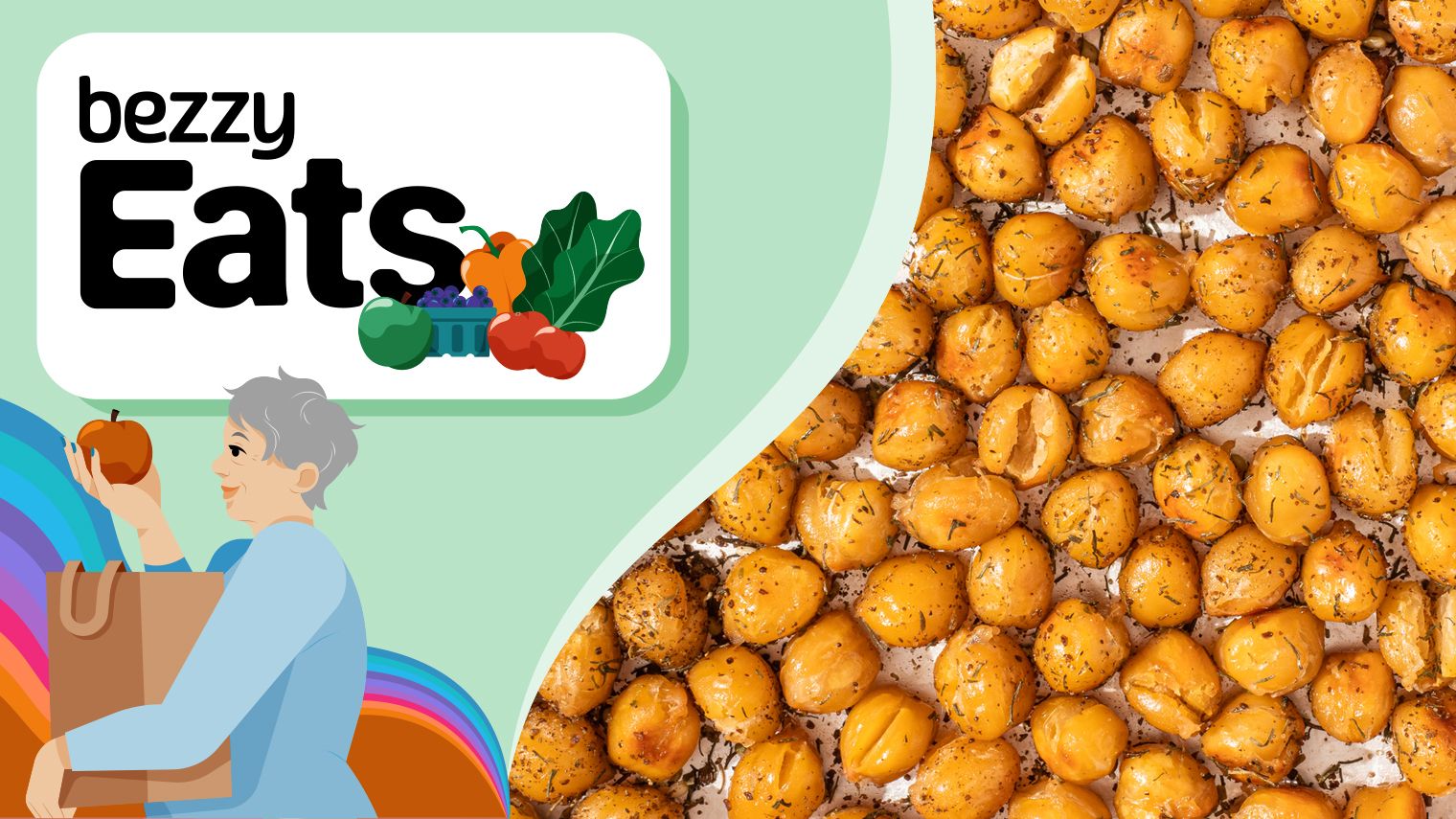What to Know About Plant-Based Protein
August 20, 2024
Content created for the Bezzy community and sponsored by our partners. Learn More

Photography by J. Anthony/Stocksy United
Protein doesn’t just come from meat and dairy. Getting more protein from plants might be just the health boost you need.
Everyone knows that eating plants is good for you. Plants aren’t only filled with beneficial vitamins, minerals, and other micronutrients, but they can also be a good source of protein.
According to some research, consuming plant-based protein is associated with better odds of healthy aging.
This may be because eating plant proteins has been linked with healthier cholesterol and blood pressure levels, better insulin sensitivity, and reduced inflammation.
Plant proteins also tend to be a good source of fiber, the heart-healthy and digestion-friendly nutrient that most of us don’t get enough of.
Protein is important for maintaining muscle mass, which allows your body to function well as you age. How much protein you need in your diet depends on a variety of factors and your health goals.


Types of plant-based protein
Complete vs. incomplete
Some plants are complete proteins, meaning they contain the same protein punch as animal proteins.
A complete protein is a food that contains all nine essential amino acids (the building blocks of protein) that your body doesn’t make on its own.
Animal proteins are complete proteins, and some examples of complete plant proteins are soy, quinoa, and amaranth.
Adding these into your diet, as well as eating a variety of other nutritious foods throughout the day, will ensure you get all the nutrients you need.
Processed vs. unprocessed
You should know that many plant-based protein foods are processed, which means they’ve been changed in some way and may have added ingredients like salt, sweeteners, oil, colors, or preservatives.
As you probably know, you want your diet to be as unprocessed as possible for optimal health.
A whole food source of plant protein is one that hasn’t been changed much before it gets to your plate — beans and nuts, for example. Even vegetables and fruits have small amounts of protein in them.
Common sources of plant-based proteins
Some of the most common plant foods that pack some protein include:
- beans, including black, pinto, kidney
- chickpeas
- edamame
- lentils
- peas
- nuts (Pistachios are a complete protein.)
- seeds
- whole grains, including oats, quinoa, and whole grain bread
- vegetables, such as broccoli and spinach
- fruits, such as avocado or jackfruit
- nut butter
- soymilk
- tofu and tempeh
- veggie and bean patties
7 tips for adding plant-based proteins to your diet
One of the great perks of plant-based proteins is how much easier they can be to prepare. Buying canned beans, packages of pre-cooked lentils, and bags of frozen grains (like quinoa) can save you tons of time in the kitchen.
And when you’re making a meal with familiar, loved flavors, you can substitute the meat for some or all plant proteins.
These are some simple ways to fit more plant protein into your diet.
- If you make a smoothie with dairy milk, swap it for plant-based milk like soy or protein-fortified almond milk.
- If you like turkey tacos or chili, swap out half the meat for beans or lentils.
- Make a “mushroom burger” where you make patties half meat and half chopped mushrooms.
- Make stuffed peppers with spiced and fried, crumbled tofu instead of ground meat.
- Add chopped tofu or cooked lentils to a bowl with quinoa and roasted veggies.
- Sprinkle nuts and seeds onto yogurt parfaits, oatmeal, and even whole grain cereal for some added crunch.
- Opt for whole grain bread over white bread and quinoa or brown rice over white rice.
Medically reviewed on August 20, 2024
8 Sources


Like the story? React, bookmark, or share below:
Have thoughts or suggestions about this article? Email us at article-feedback@bezzy.com.
About the author